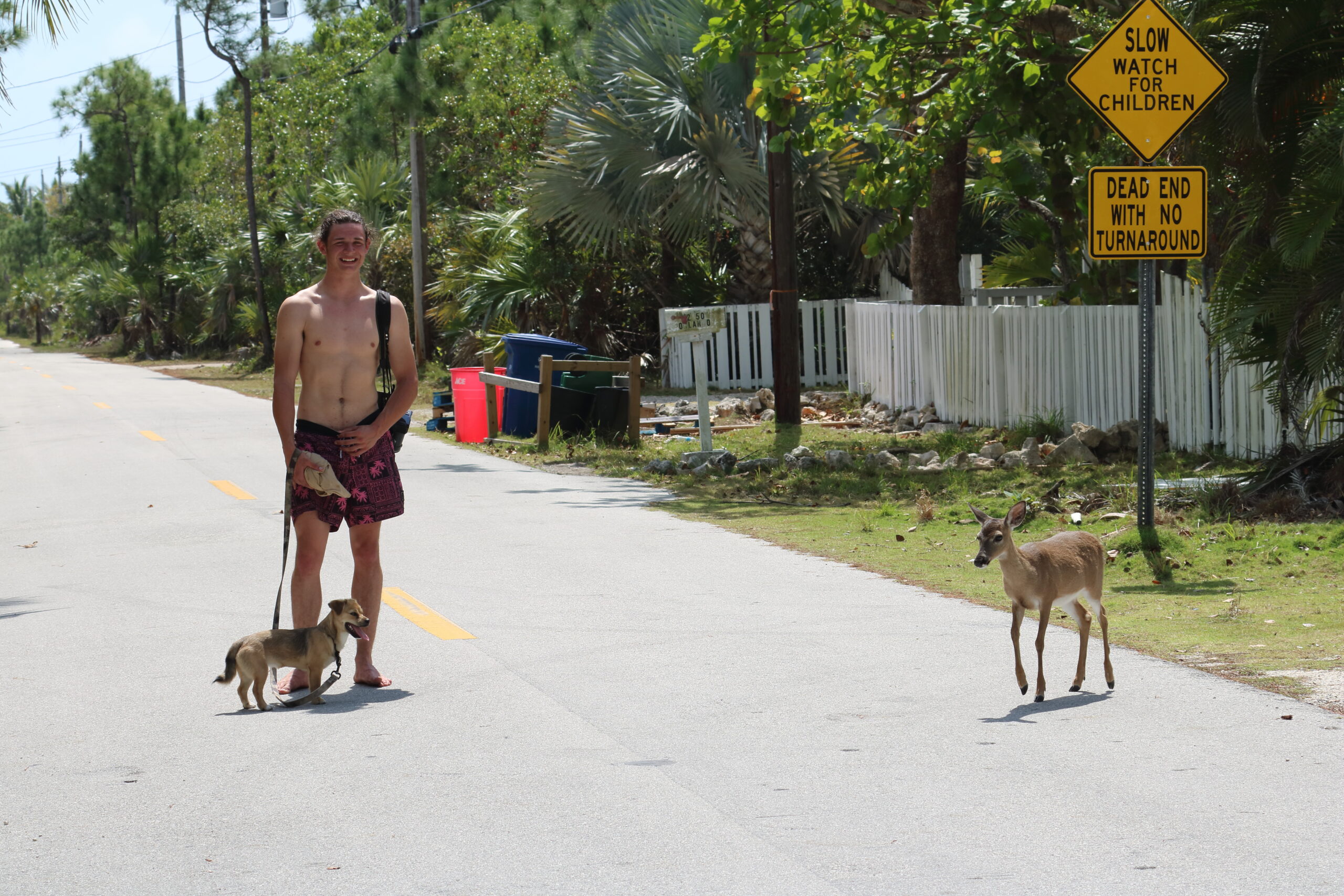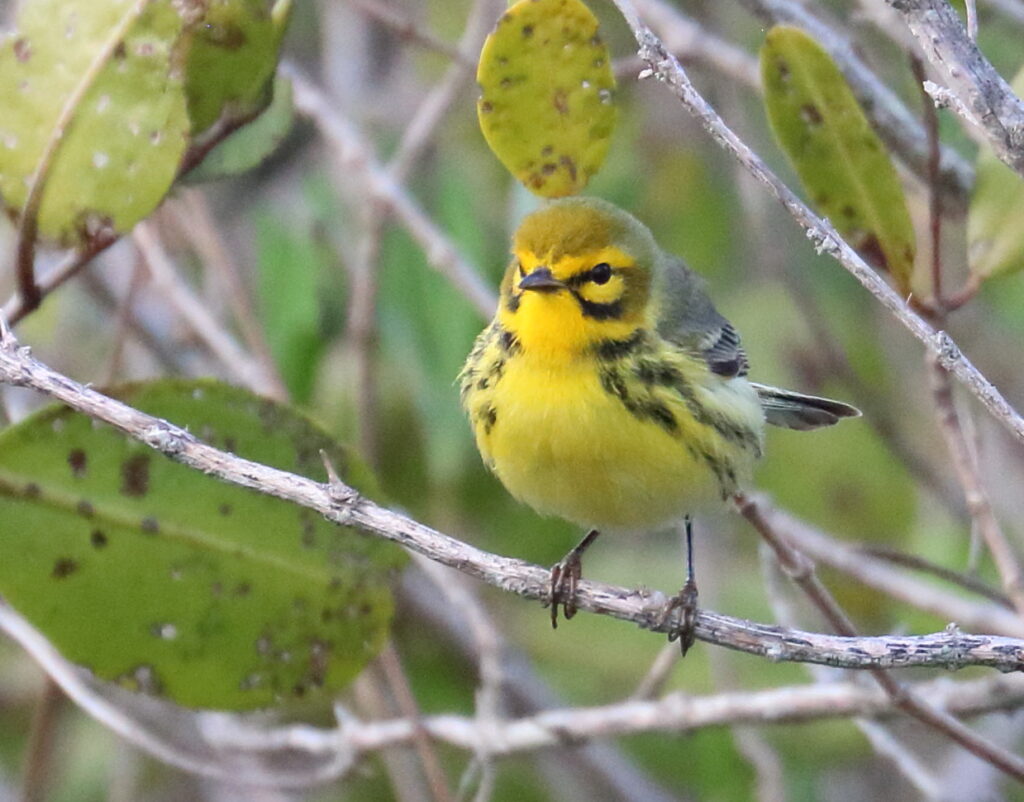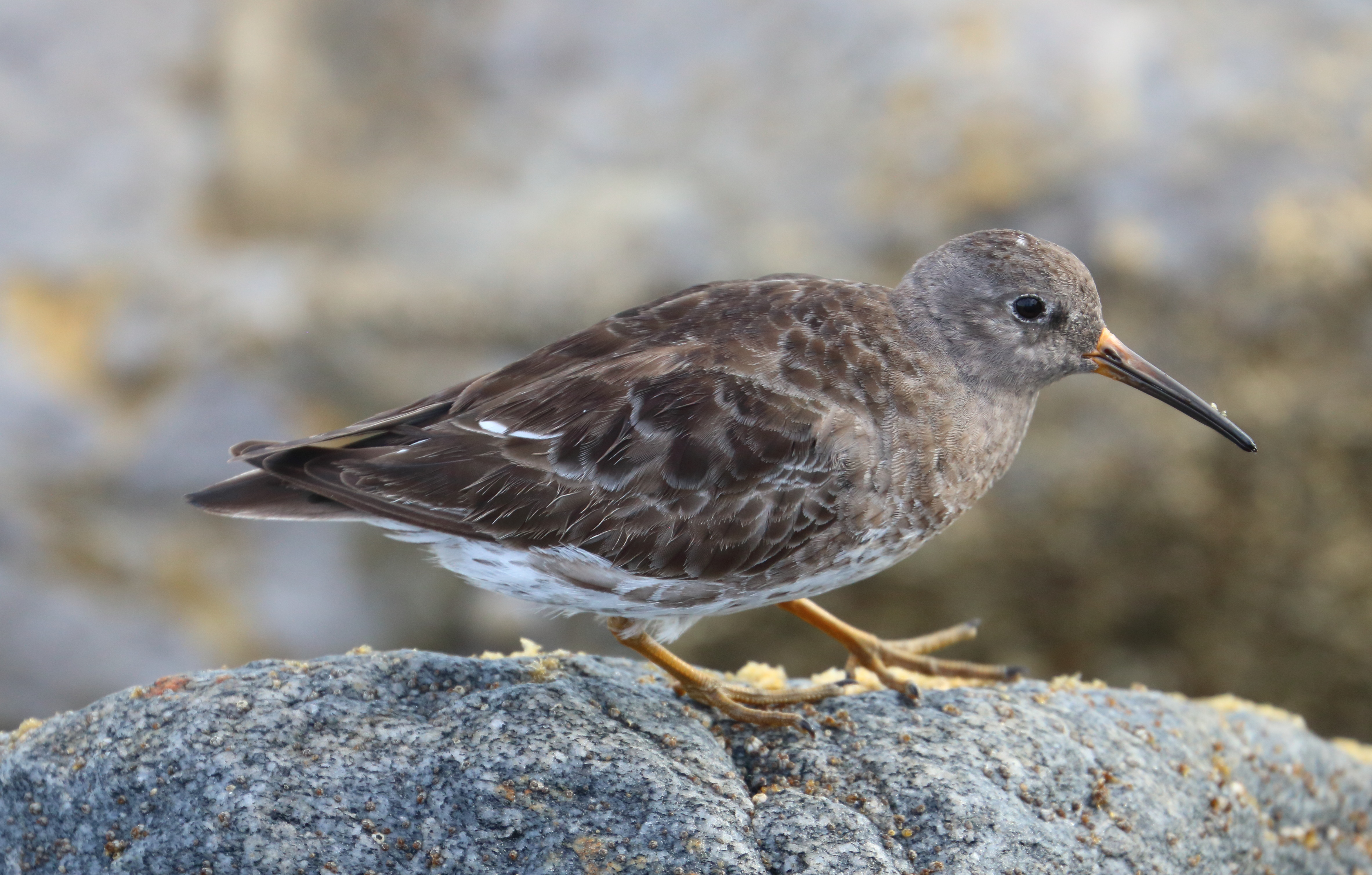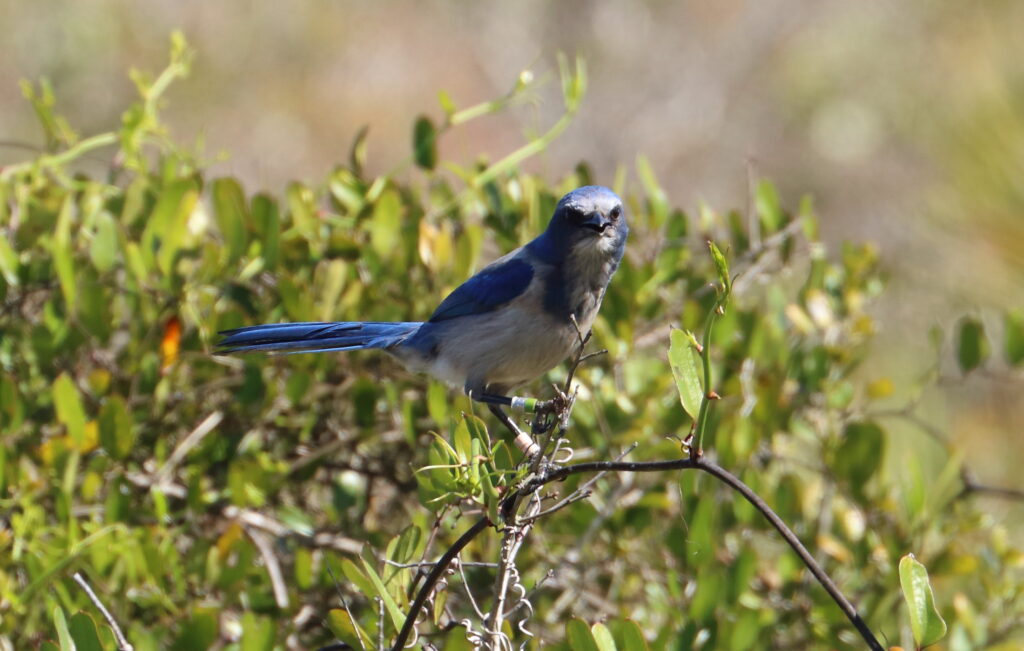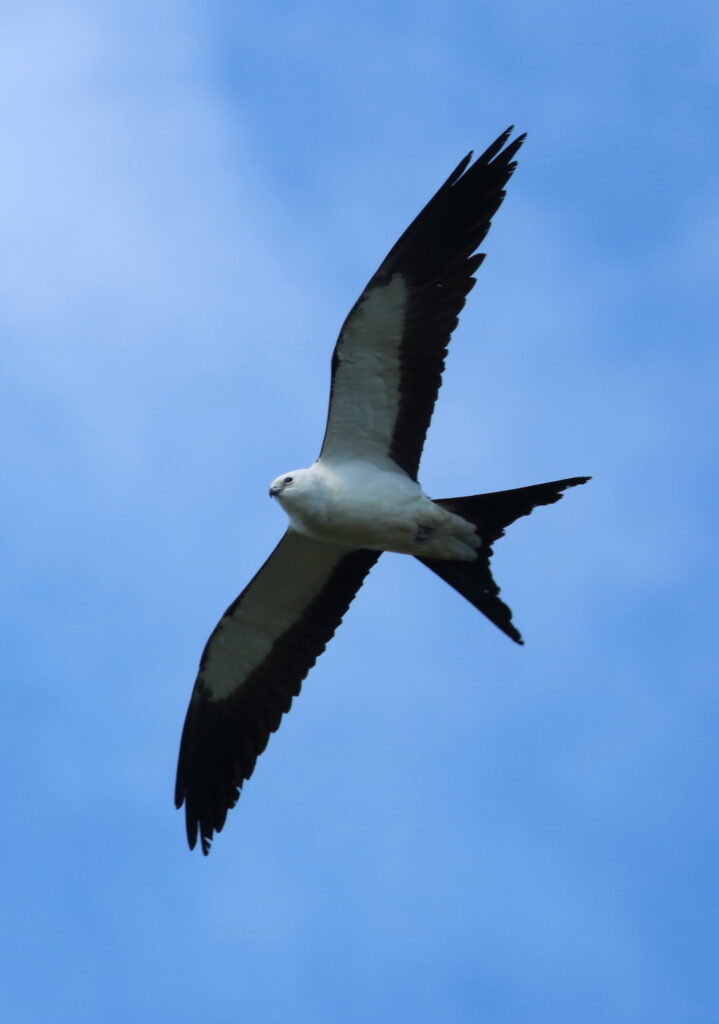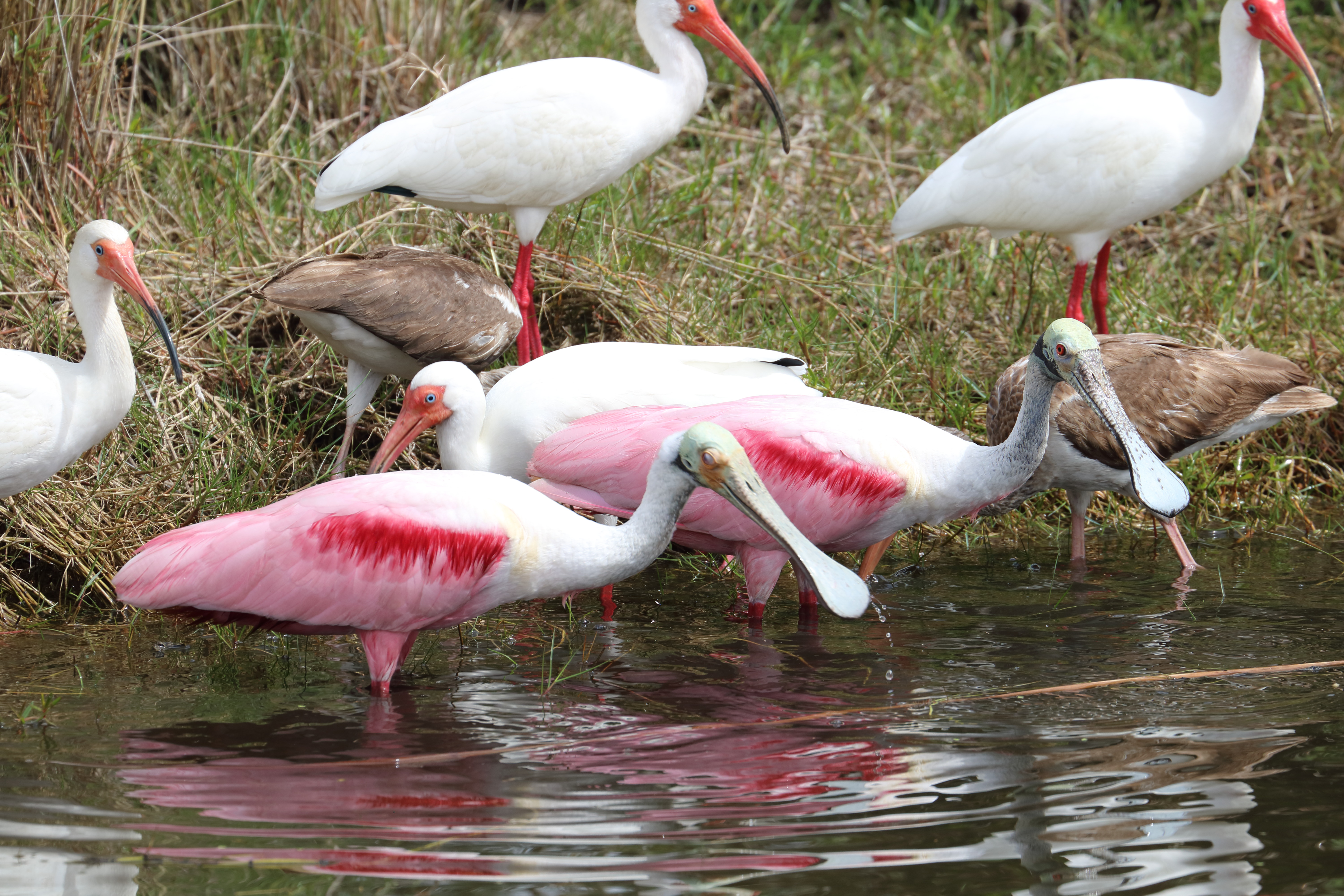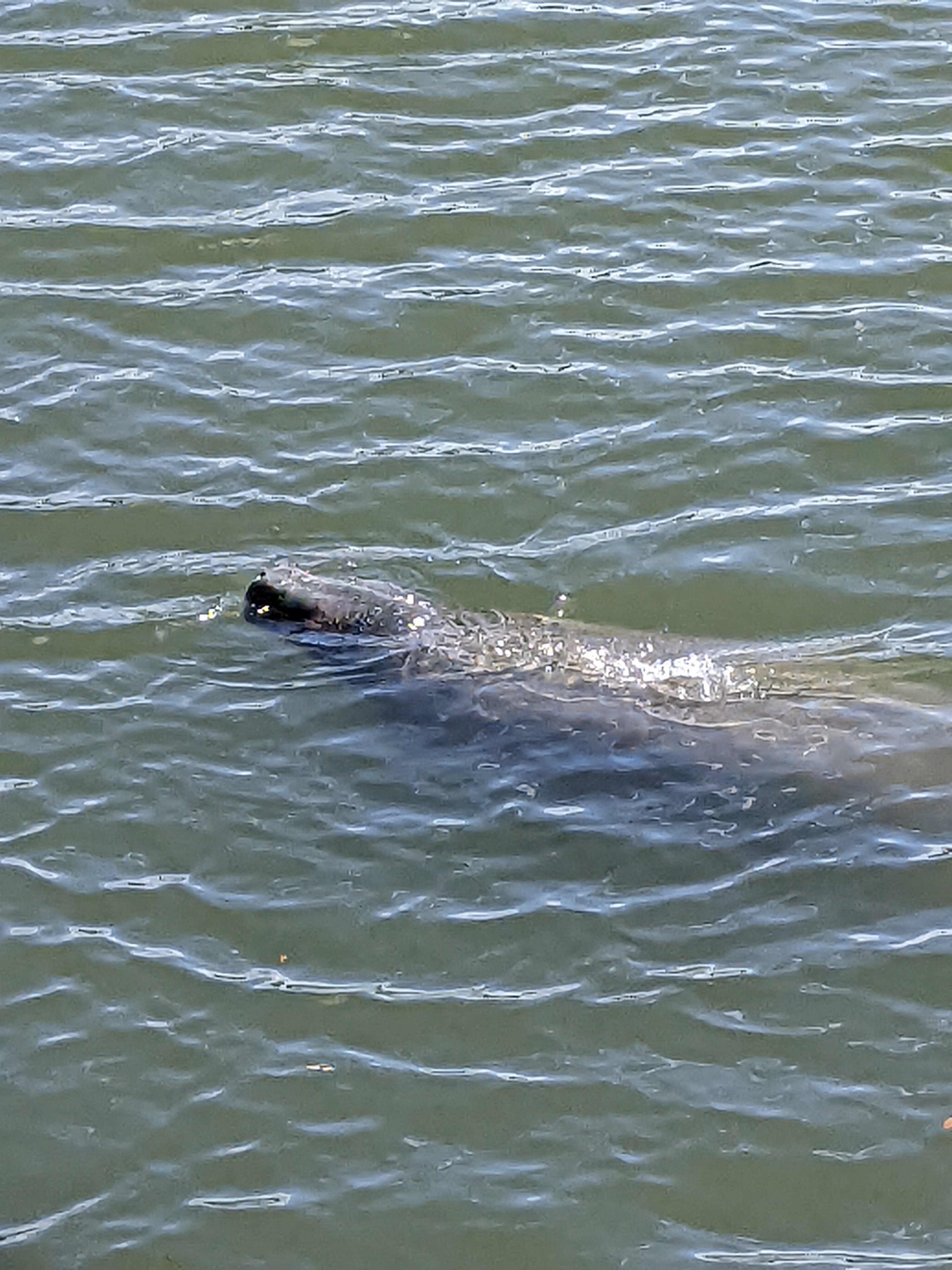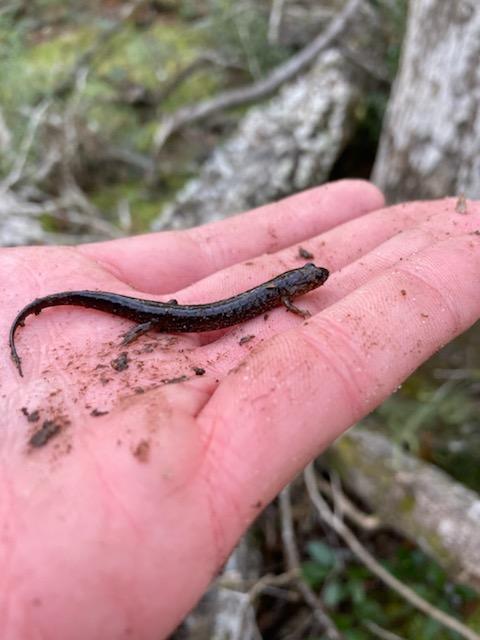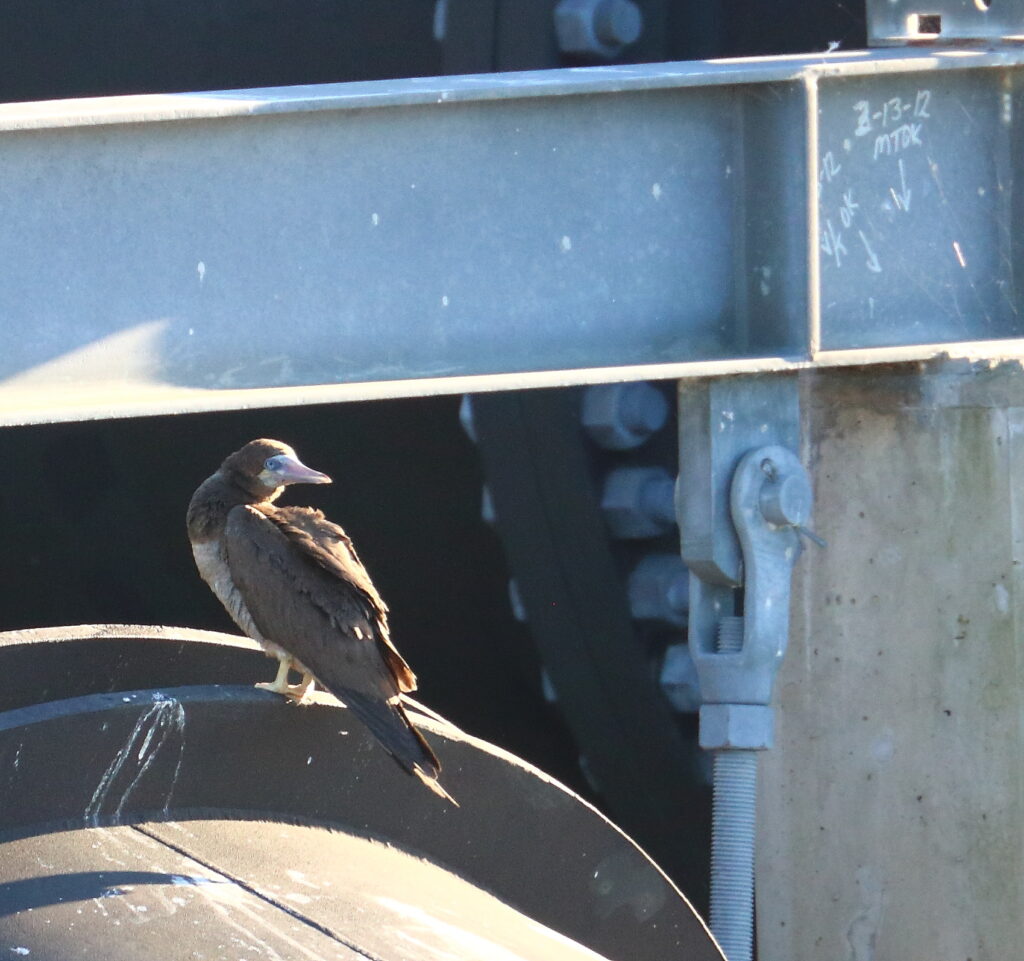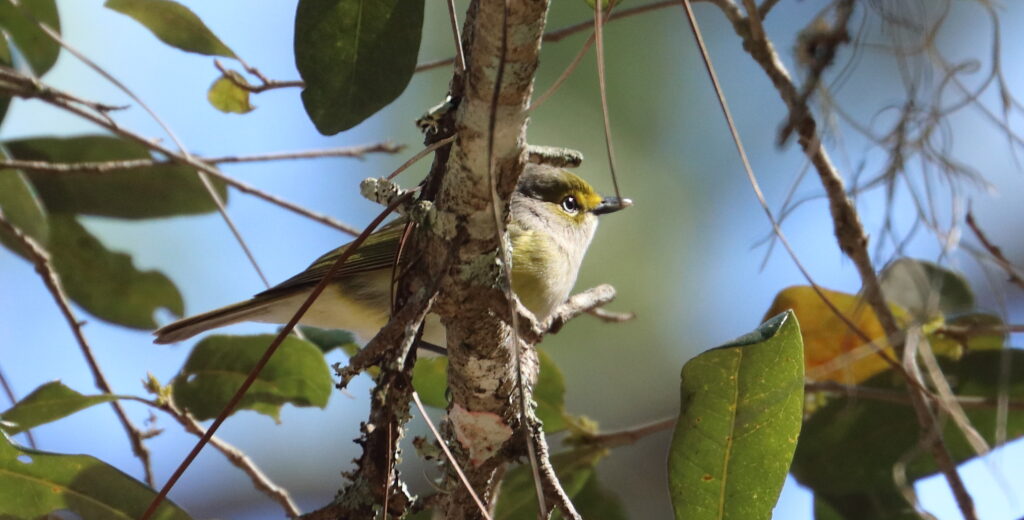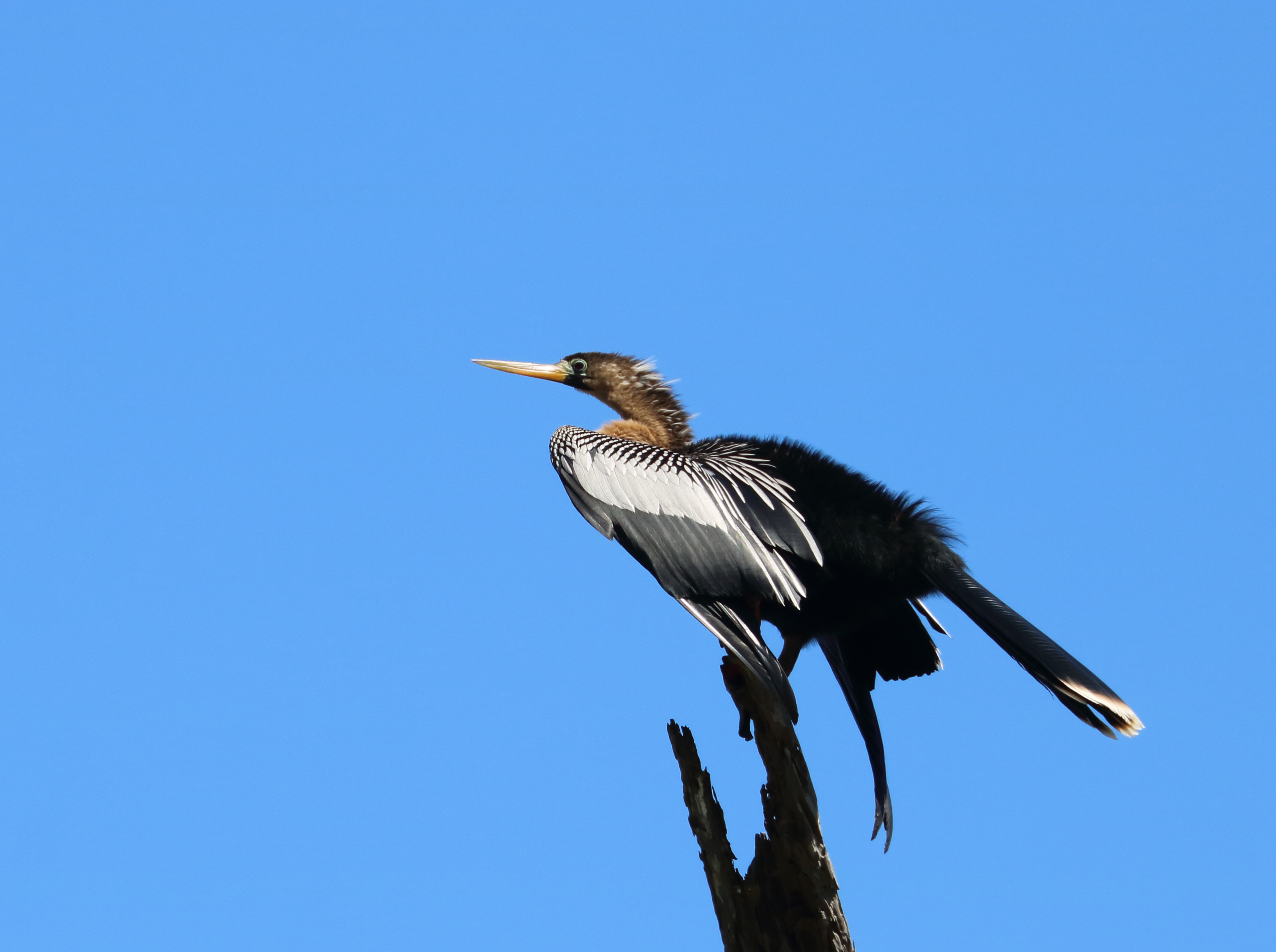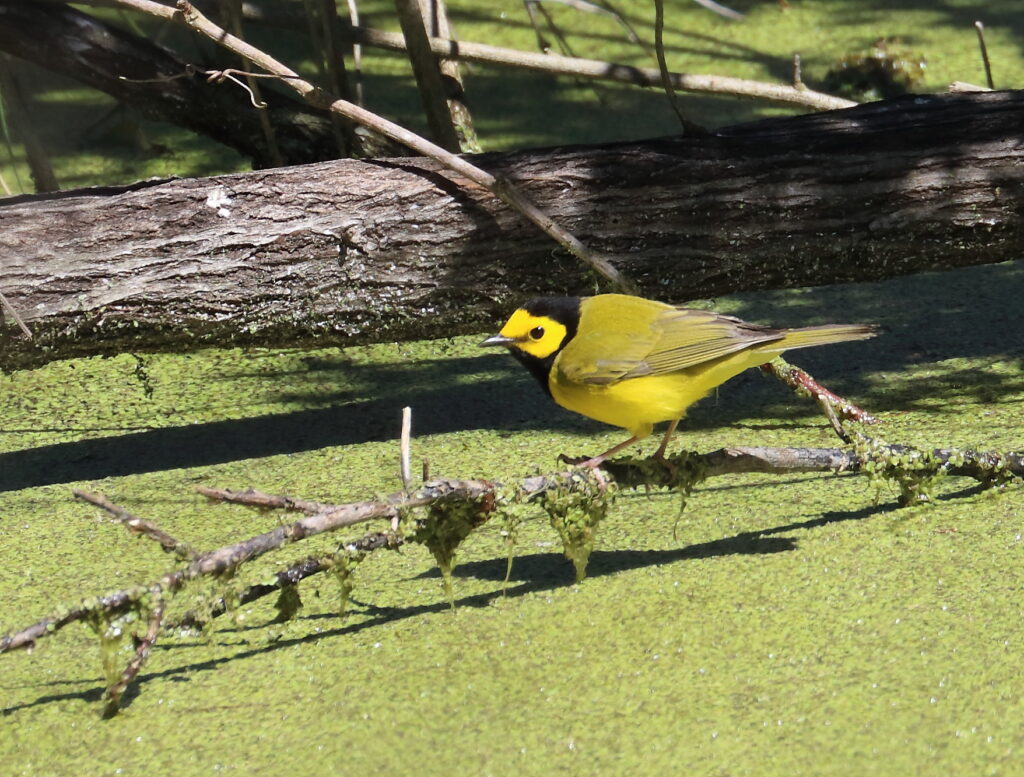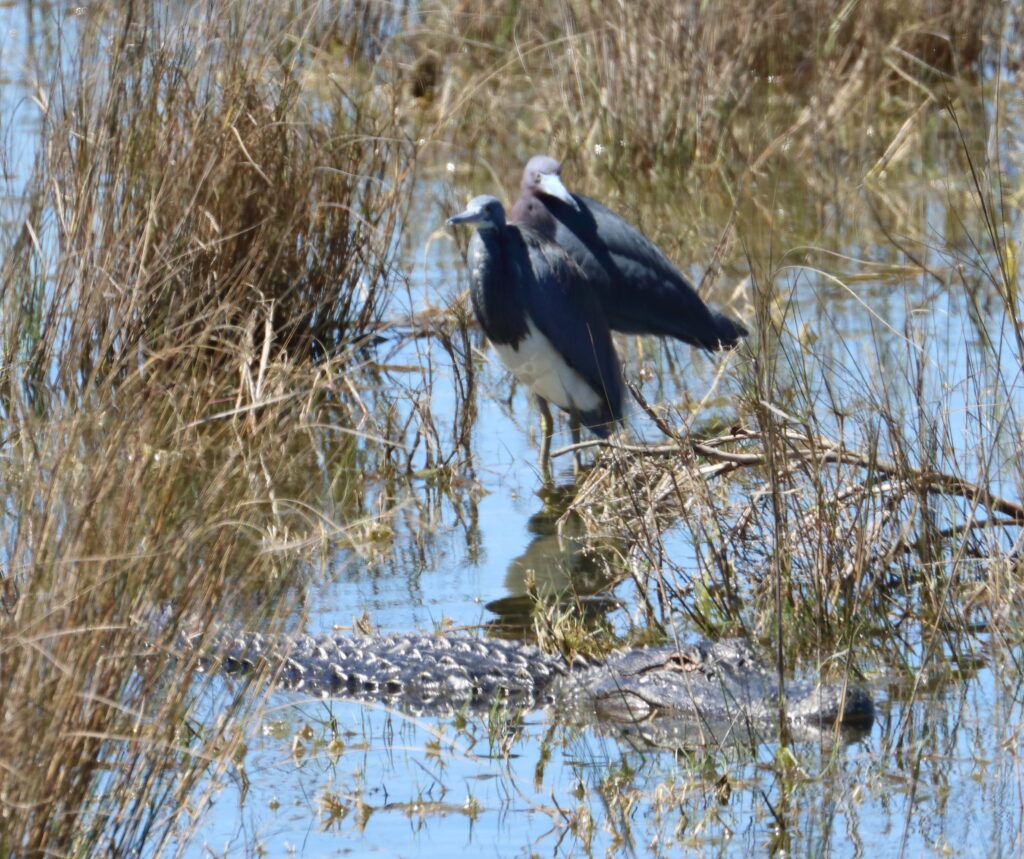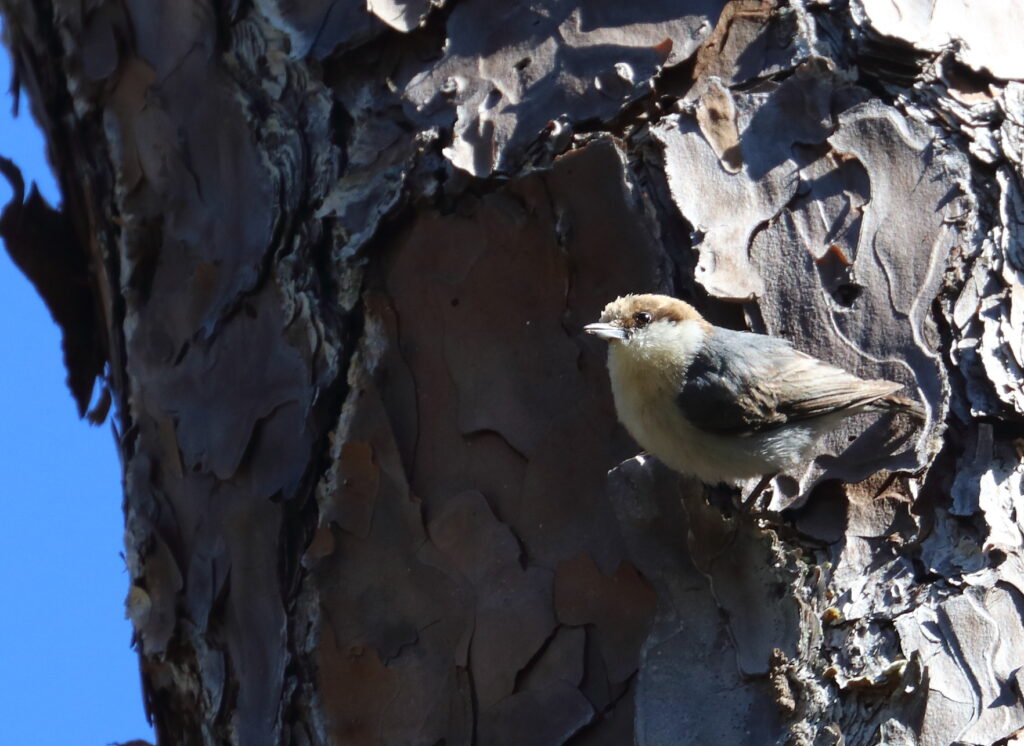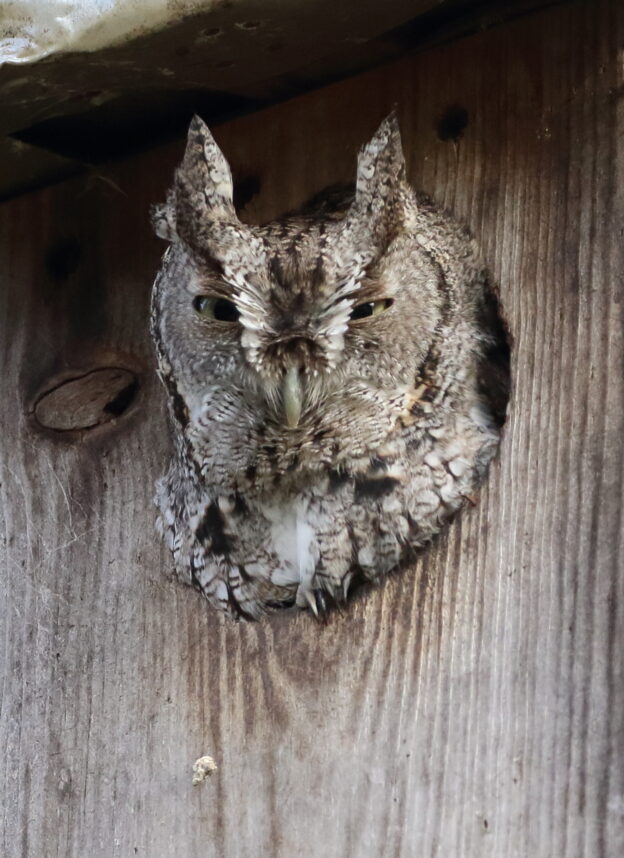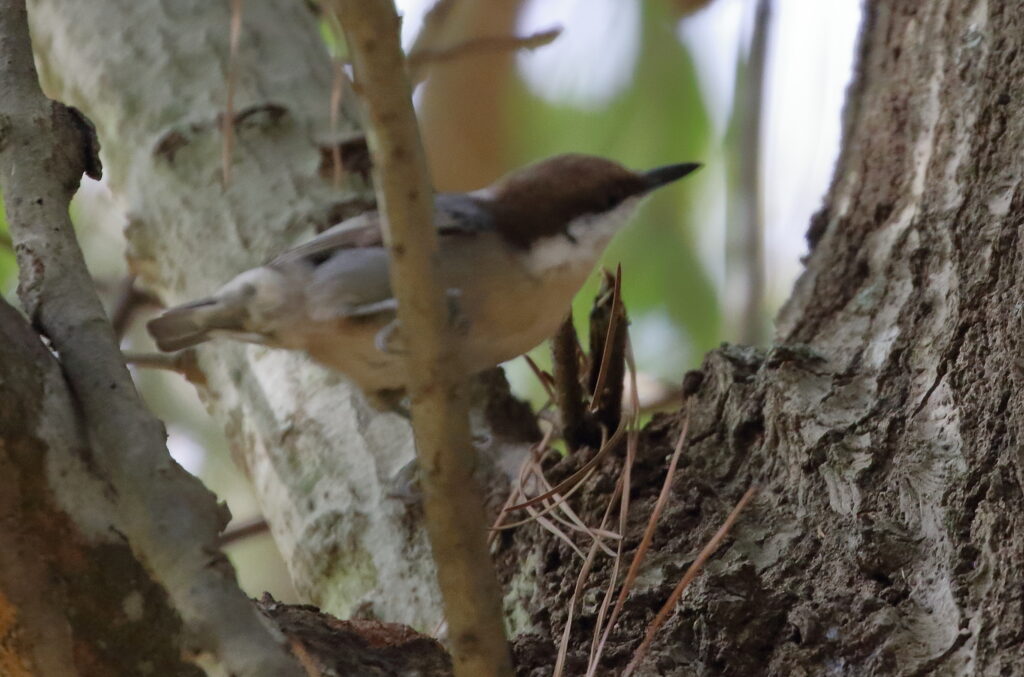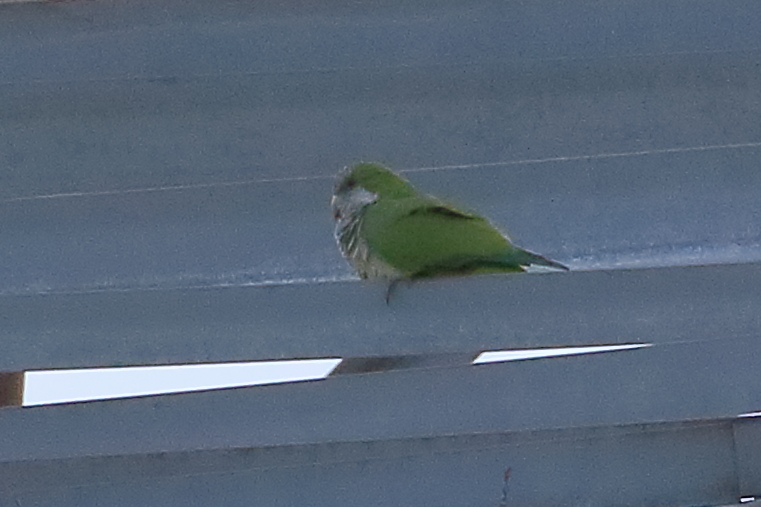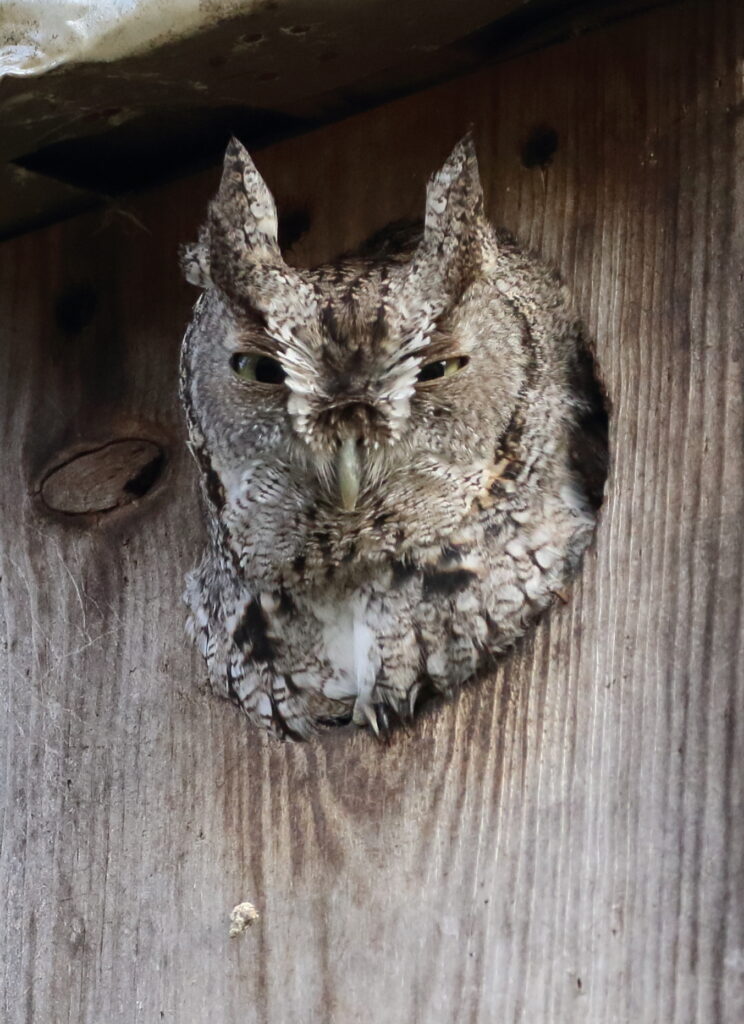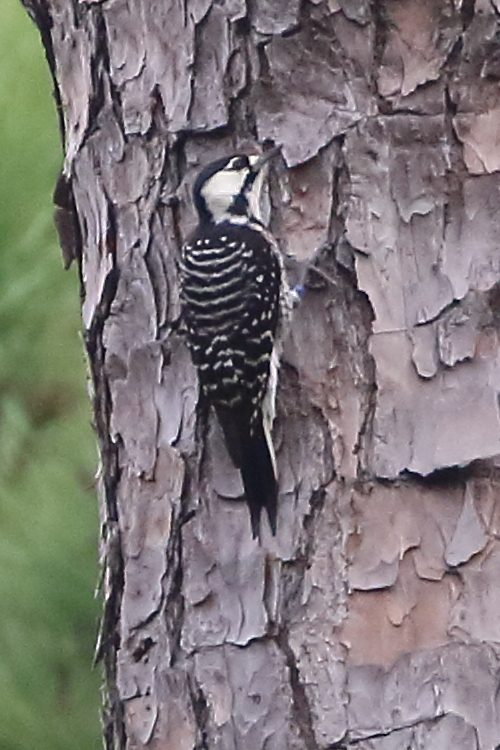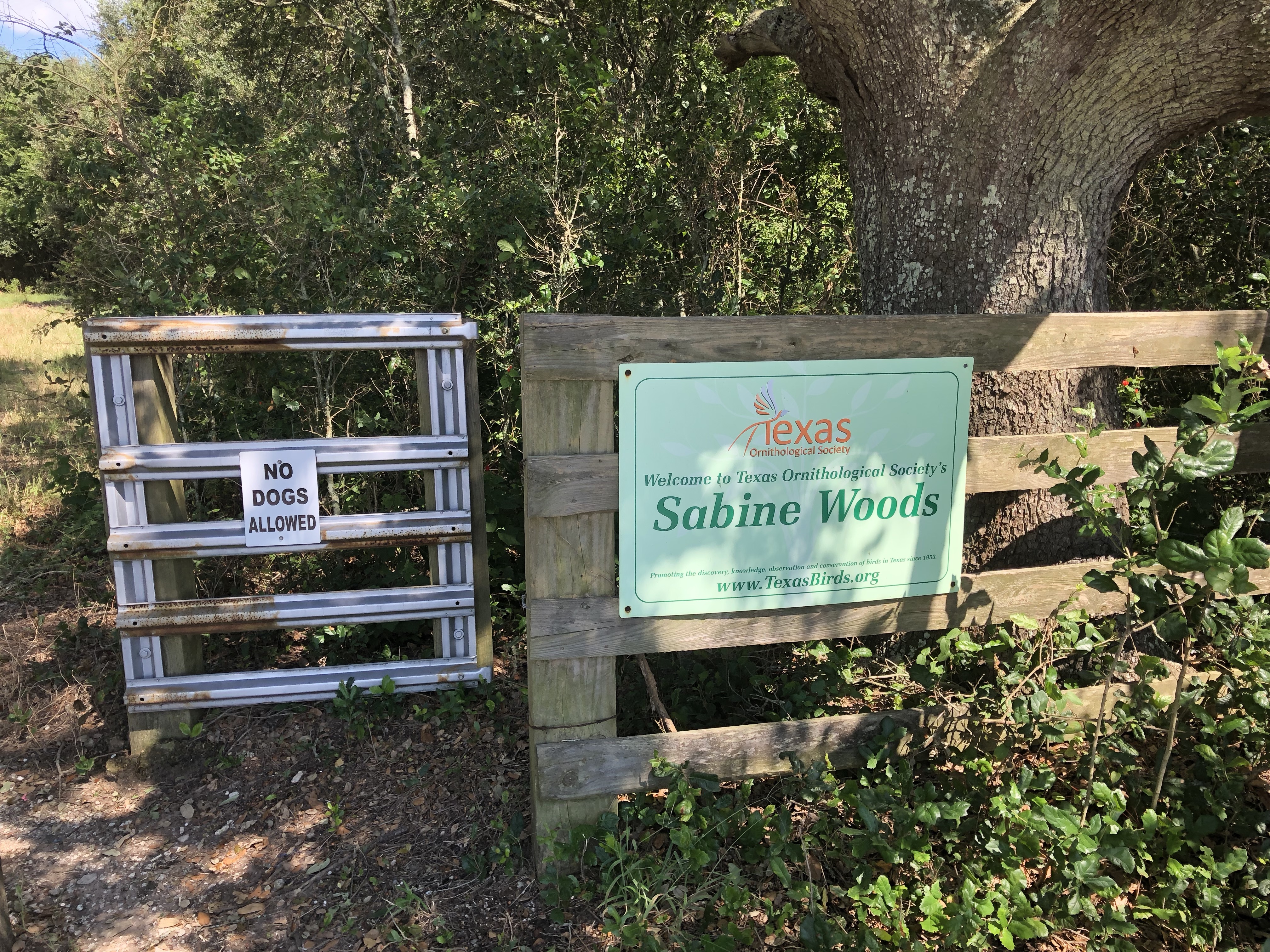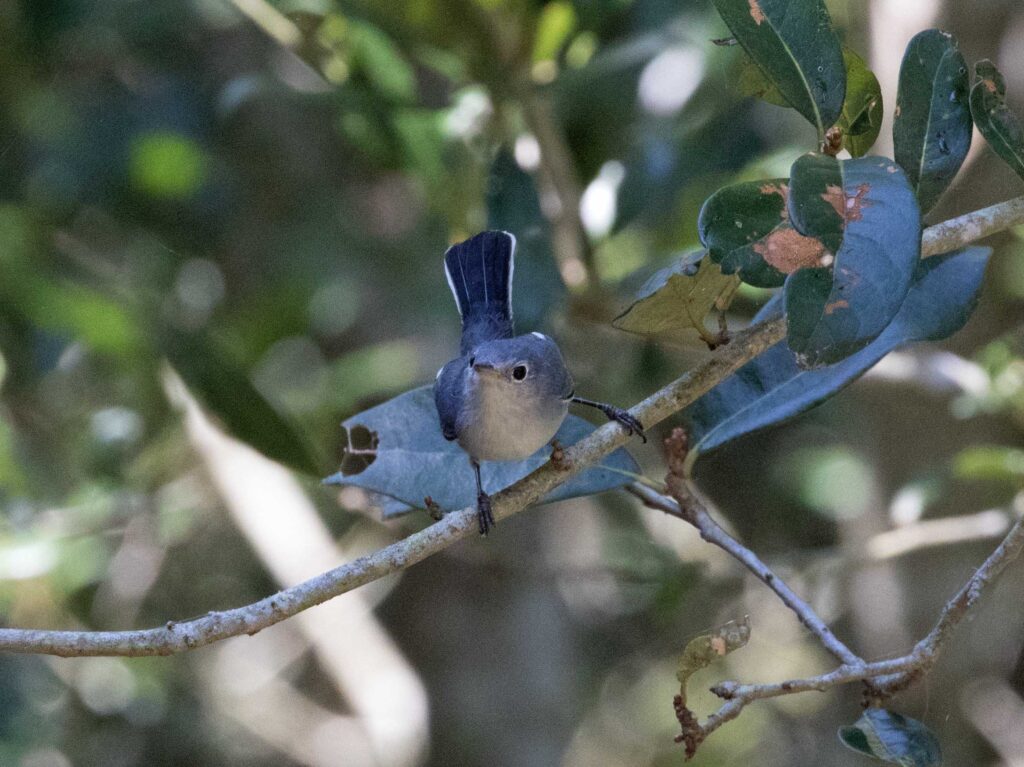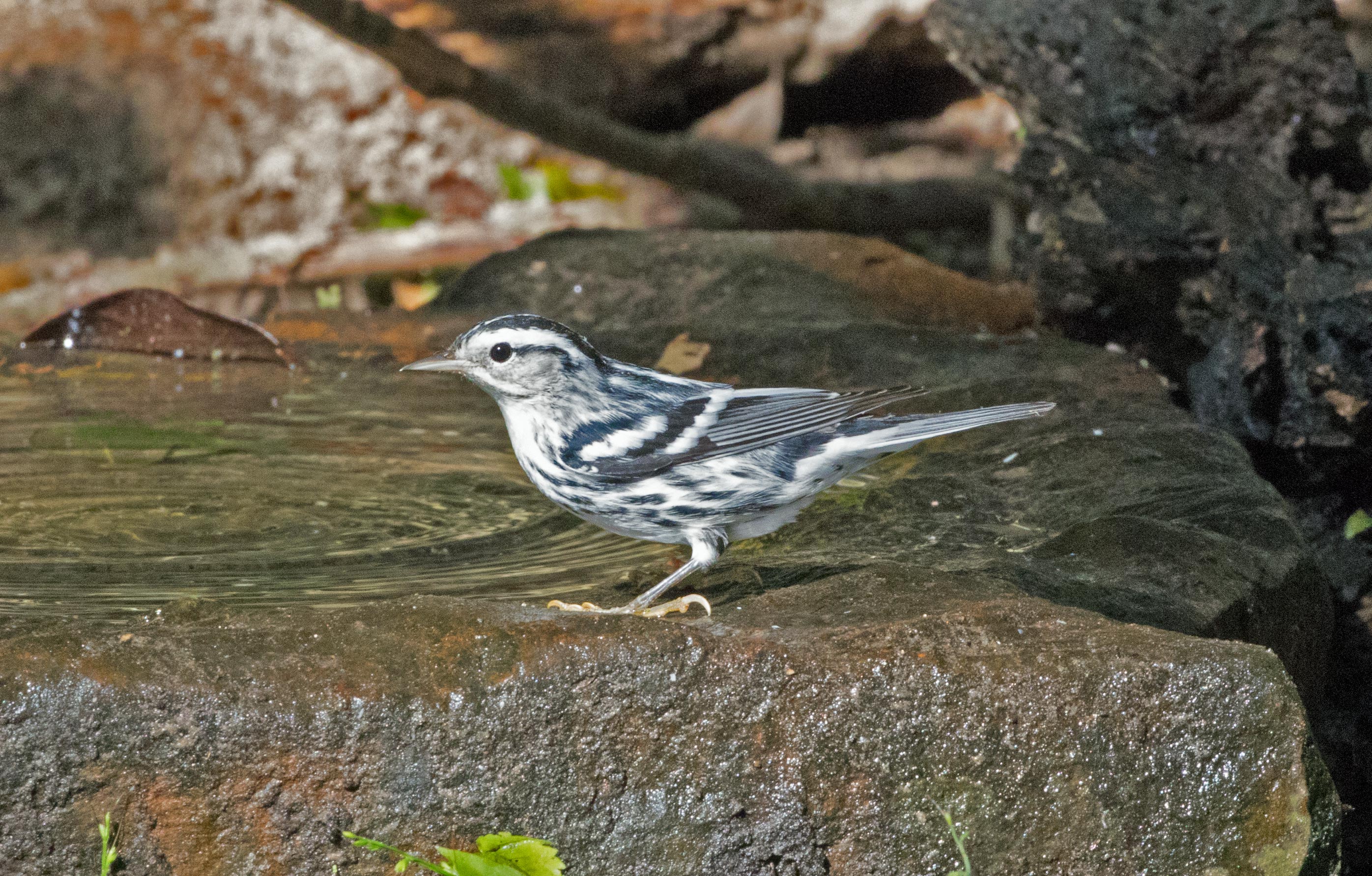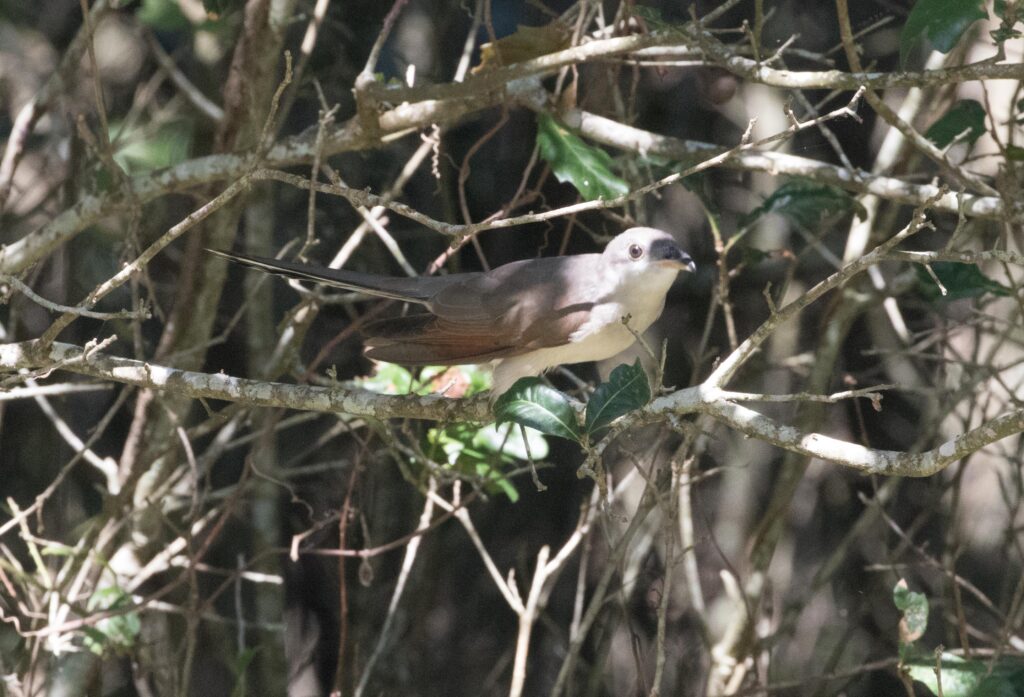Welcome to Blog 4 of Braden’s series about his and Nick Ramsey’s remarkable birding excursion through Florida. Nowhere in the U.S. do things get more biologically bizarre than in South Florida, and especially in the Keys. Enjoy and, as always, please feel free to share this post.
A Great Horned Owl, the second owl species of our trip so far, greeted us as a silhouette on a power pole as we raced south from the Everglades at dawn. After waking to the sound of more Chuck-wills-widows, we’d packed up the car, and now were on our way towards the southernmost point in Florida. We crossed a small bridge overlooking the slowly-brightening shallow waters of south Florida, and suddenly, we were there: the Florida Keys.
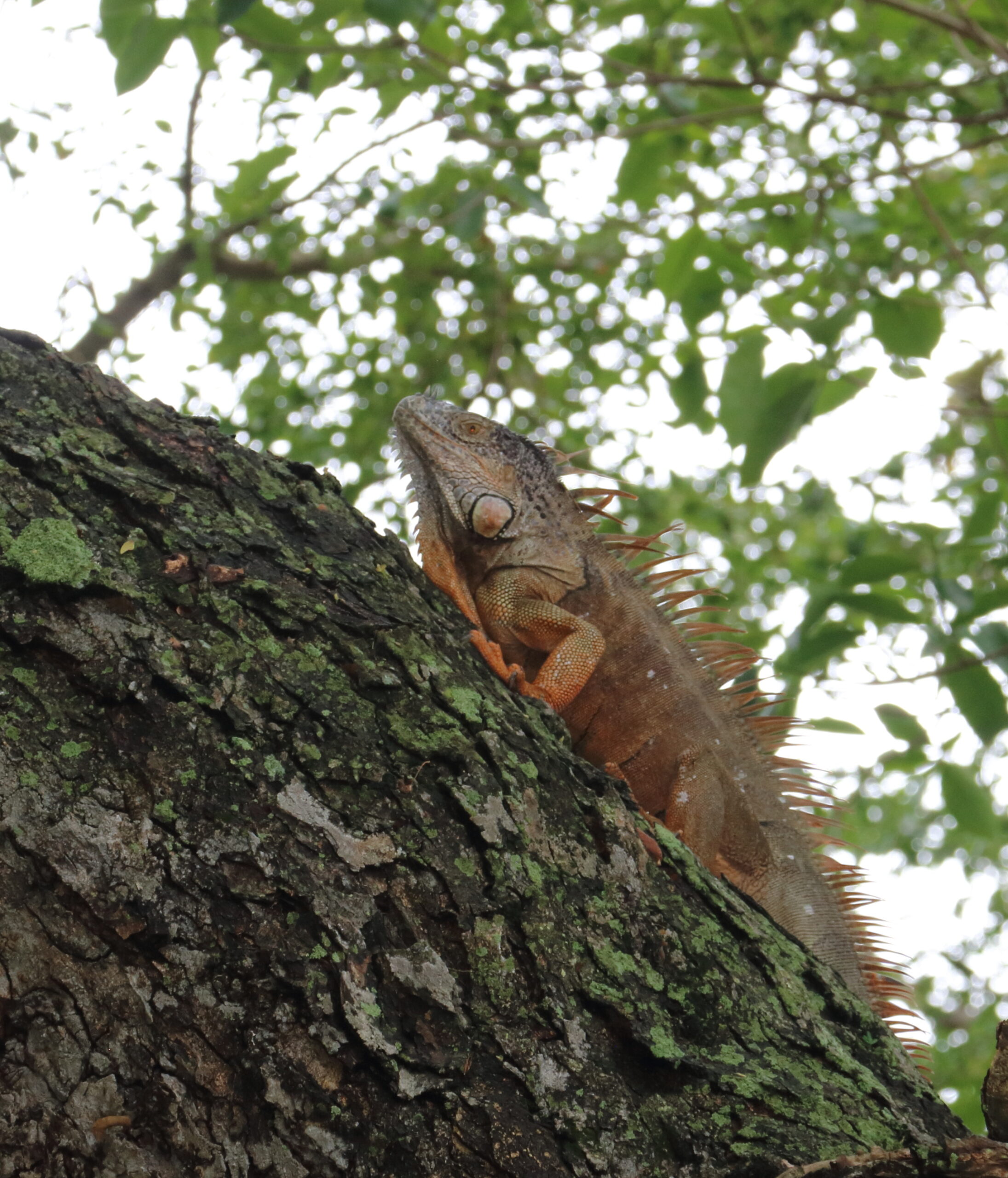
Our first stop, like many of our stops today, had one major target: Mangrove Cuckoo. This species, one of North America’s most elusive, had consistent records only from the very southernmost part of the state, barring a few reliable spots farther up the Gulf side. The habitat looked right—the part of Key Largo we’d just entered was absolutely coated in Red and Black Mangroves, and as we pulled into a dirt parking lot, we were greeted with the songs of White-eyed Vireos, a species I had not expected to breed in the mangroves. This area, especially later in the season, could be stellar for vireos, with Red-eyed, White-eyed, Blue-headed, Yellow-throated, Black-whiskered, Thick-billed, Yellow-green and even Mangrove all possible. Unfortunately, we were still a bit early for many of these birds, and we saw and heard only White-eyed throughout the day.
The first stop was not particularly productive, and we realized that we were in the wrong habitat for the cuckoo. Despite having driven through mangroves to get here, the road wound its way through almost-subtropical deciduous forest rather than the water-submerged trees we needed to find a cuckoo. Dagny Johnson Key Largo Hammock Botanical State Park(say that three times), just down the road, proved considerably better, and as we got out of the car Nick got on a warbler almost immediately.
“Black-throated Blue!”
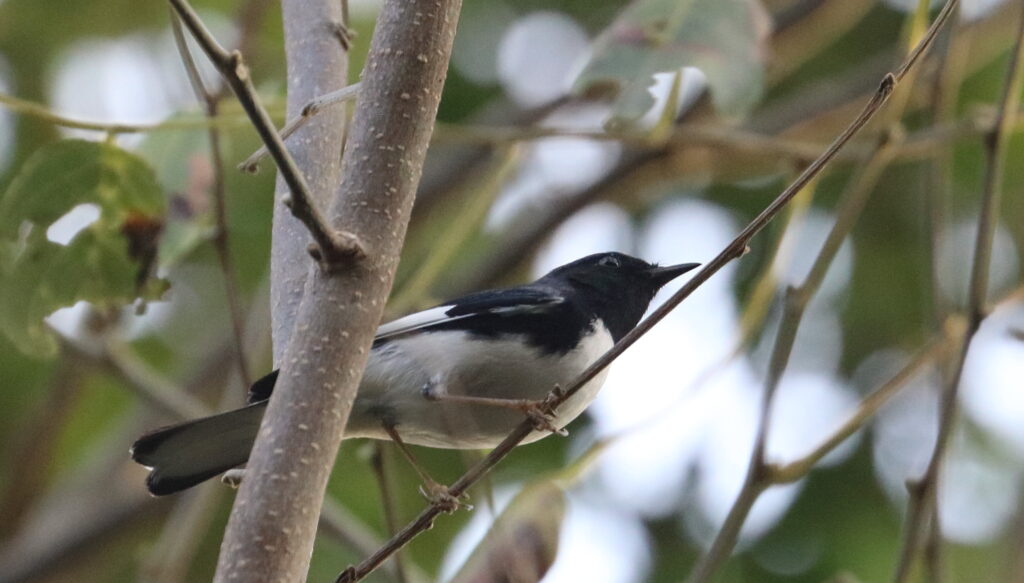
“Really?” I said, jogging up to where he was standing. Sure enough, a darker, blue and black warbler hopped into view a few feet above us in a tree, and began responding as we played Blue-headed Vireo calls. It was one of my last Eastern wood-warbler needs, and one of the best of them at that. Soon, several parulas and vireos came to the playback as well, and we found ourselves in a miniature mixed winter flock, something we had been hoping to encounter. Continuing down the path, another lifer appeared.
Two dark pigeons flew over, landing in a snag barely lit by the morning sun, and I raised my binoculars, confirming what I’d suspected. While I could make out few other features aside from the dark gray color, the one feature I saw nailed the identification.
“White-crowned Pigeons!”
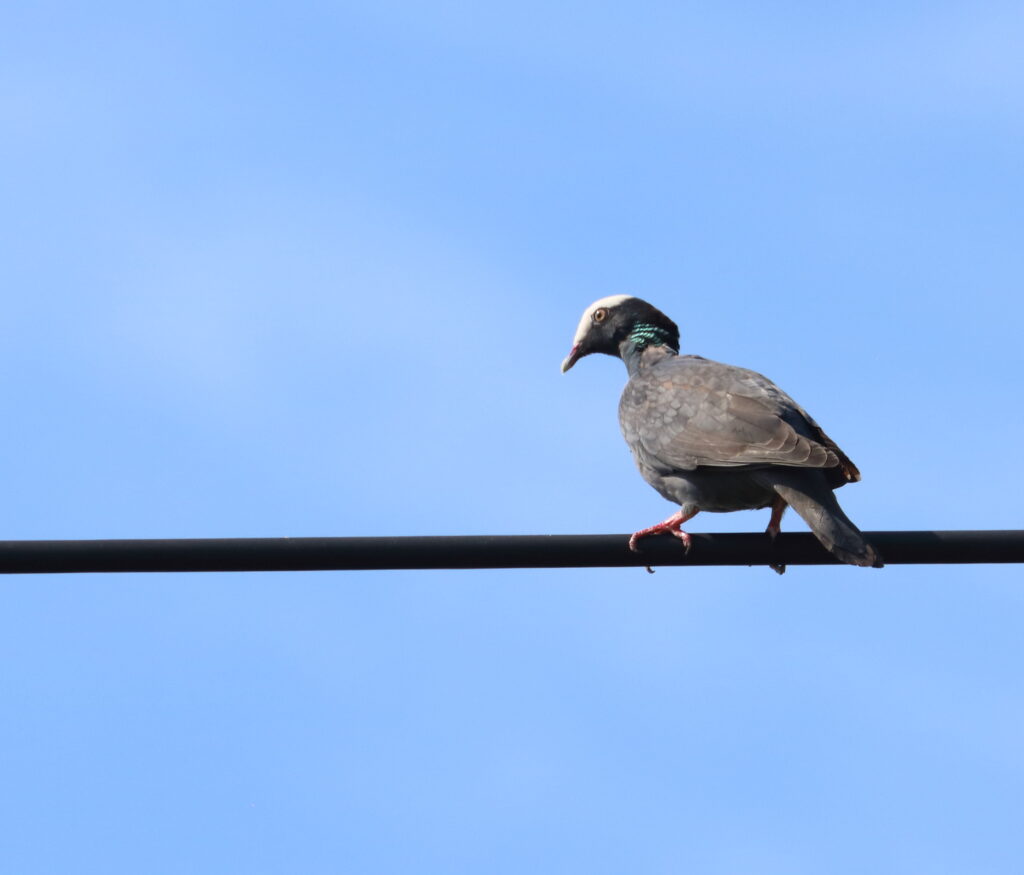
This species, a Caribbean mangrove specialist like the cuckoo, also had a very restricted U.S. range, but where it did occur—specifically here—they were supposedly quite abundant, something we confirmed as we drove farther south. They weren’t the only member of Columbidae present, though. We tallied an astounding six species including Eurasian Collared, Mourning, Common Ground and White-winged Doves plus Rock and White-crowned Pigeons. Who knew that the Keys would be so good for this seemingly random family!
Every key differed, if only slightly, from the last. Resorts and restaurants covered the larger Keys, like Key Largo, and I was surprised to see how much land existed on them. I’d assumed many of these islands would be completely mangrove, but I had assumed wrong, as everywhere we looked we saw dirt, whether put there by humans or not. The smaller keys were the really neat ones though—sometimes only a couple of hundreds of meters wide, the Overseas Highway divided what little land each had. We stopped on many of these small keys to play for Mangrove Cuckoos, with no success, but we did make other cool discoveries. Shorebirds coated the beaches and lagoons, and Magnificent Frigatebirds circled above as commonly as Red-tailed Hawks in Montana. The two most abundant passerines were Prairie Warblers and White-eyed Vireos, both of which appeared to have distinct breeding populations found in the mangroves. The water itself was a stunning blue-green, and I could see why hotels and resorts were so popular here.
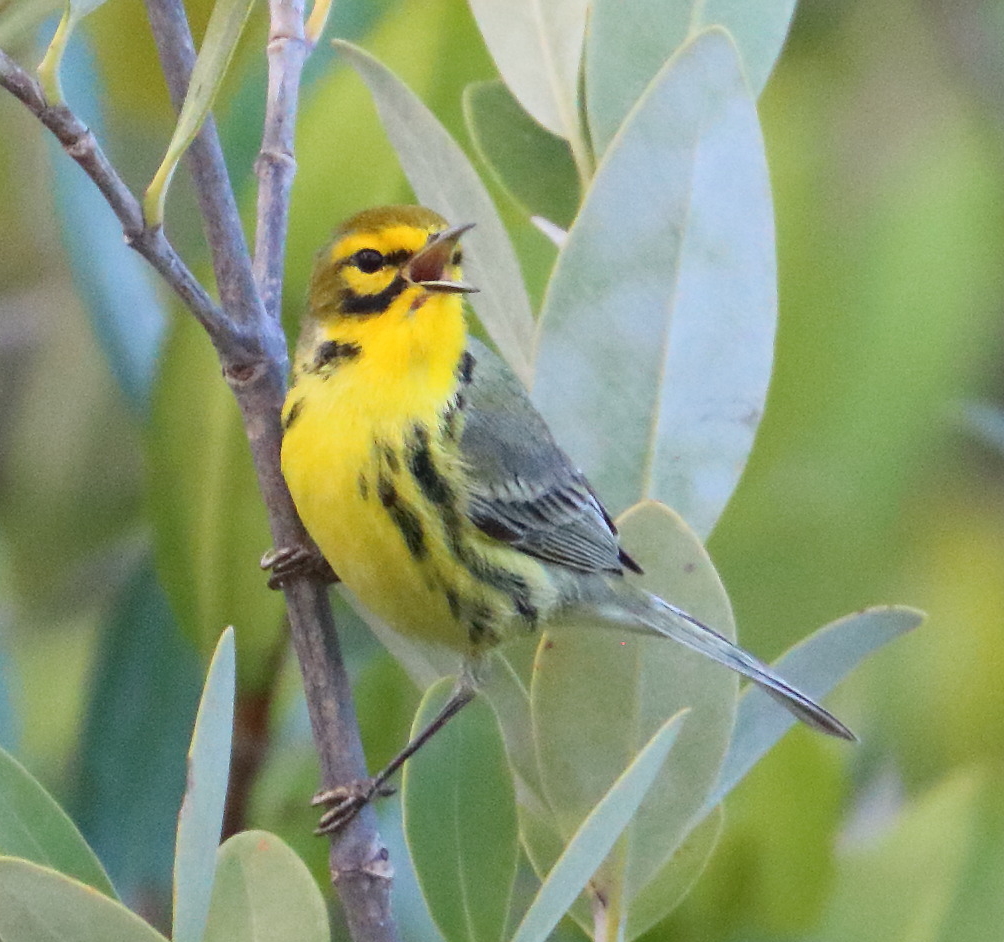
While we drove, I kept an eye on the sky. While we’d gotten our trip Swallow-tailed Kite a few days before (and also happened to get one in the Keys), we were still missing another Florida specialty: Short-tailed Hawk. This raptor had a very small population in the United States, and could be told from other Buteos by its often-dark wings, barred tail and small size. On our drive down, however, we didn’t spot any, growing a bit concerned that we might miss them for the trip.
After driving over water for a while, we soon arrived at Big Pine Key, one of the largest islands, not to mention being one of the farthest south. This island was unique, hosting a rare habitat known as Caribbean Pine Rockland, and this new habitat brought a new endemic subspecies: Key Deer. This deer, a miniature version of a White-tailed Deer, only lived on this cluster of islands, and did not occur on Key West, farther south, or on any of the keys farther north. Several other strange species lived here, including Indian Peacock, which had been introduced and established itself on this island. Indian Peacock, despite being found all over the United States as escapees, was only actually countable in this one place in the entire country!
We spent the day so far in mangroves, but at the Blue Hole nature walk we felt transported back to the Pineywoods section of the state. This habitat, like the Pineywoods, was actually fire-dependent, although I had a hard time imagining how, given the tiny geographic area it occupied in the middle of the ocean. We soon arrived at a small wooden platform overlooking a large, mostly clear pond: the Blue Hole. A slightly obnoxious woman welcomed us, pointing out an alligator lying right below the platform, its entire, scaled body visible in the water below us. Further out in the pond, a large silver fish floated aimlessly.
“Tarpon,” said the woman, “Usually a fish only found in saltwater. These guys got deposited by the last hurricane. You see that?” She pointed at a mark on the platform at about the height of my knees. “That’s how high the water was, all over this damn island.”
Nick and I continued, finding ourselves on a large dirt road. “If we walk down this, we should see some deer,” said Nick, who’d been here before. Sure enough, after a few dozen meters, we came across a few feeding in the yard of a vacation home. While they weren’t mind-bogglingly small, they were smaller than any of the White-taileds I’d seen in Montana or Maine, or even northern Florida for that matter. We kept Dixie on a leash as she stared intently at the Key Deer, which were fairly unimpressed by our presence. Before leaving, we also managed to hear an Indian Peacock from somewhere in the pines—another lifer for me.
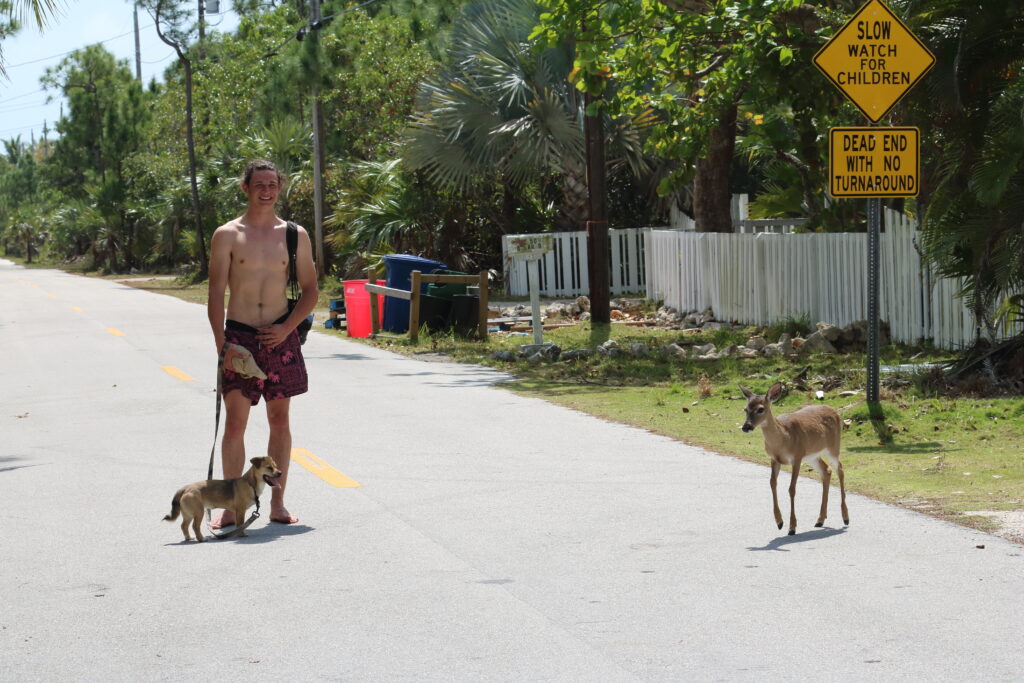
After finding an early Gray Kingbird (see my post “When Montana Birders Collide“), we continued down to Key West, pulling into the parking lot for the Key West Botanical Gardens. It was only forty minutes before closing time and we cursed ourselves, having hoped to get more time at what was surely one of the best spots to bird in the keys. We split up, heading off into the forest of foreign plants to try to tally as many species as possible. After twenty minutes with almost nothing besides a cooperative Black-and-white Warbler, Nick called me. “I’ve got a mixed flock! Get over here!”
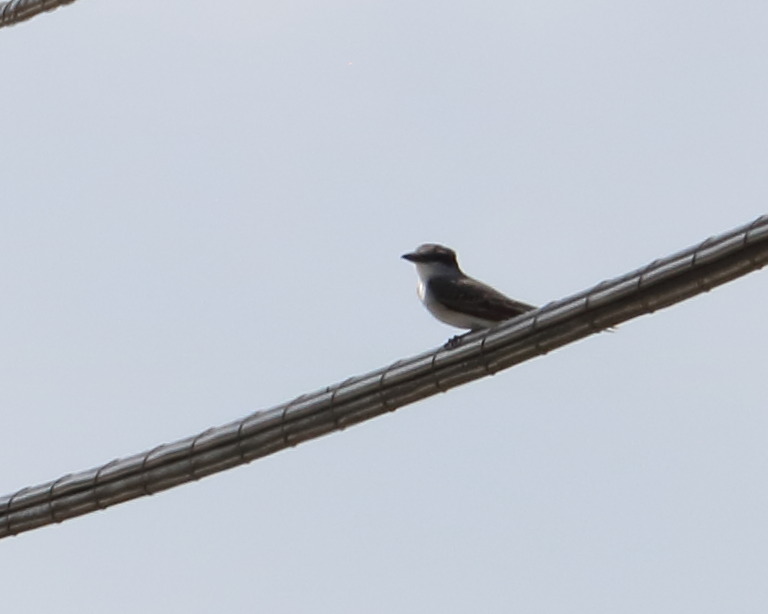
I was on the other side of the gardens, and took back off the way I’d come, eventually finding him on the other side of a manmade lake. He played his mixed flock playback, and the birds poured in: Prairie, Yellow-throated and Palm Warblers, accompanied by a squadron of catbirds. Two splotchy Summer Tanagers joined the fray, and Nick pointed out a Ruby-throated Hummingbird as it zipped by. I was disappointed in my inability to find anything like this on my own, but was happy that we’d finally found one of the mixed flocks the Keys were known for.
Our last major stop of the day was Fort Zachary Taylor Historic State Park, a manicured tourist destination that had been hosting a Black-faced Grassquit for several months now. Birders were unsure as to whether this grassquit was wild or not, given that they were a popular cage bird, but a wild population did exist on the Bahamas, not all that far from here. Regardless, it was one of the less exciting rarity chases we’d ever done. We pulled up to the spot it had been reported in, following coordinates others had posted, and located the bird deep in a bush, its ashy head poking out every once in a while, and that’s where it stayed. After getting another birder on it, we continued walking around the park, scanning trees for more warbler flocks and brush piles for rarities. A Merlin flew over, spooking the established Red Junglefowl as they strutted around the lawns, but we found nothing spectacular, and were soon back on the road north. The Keys had been some of what we’d hoped them to be. I’d gotten several lifers, and we’d found a rare—
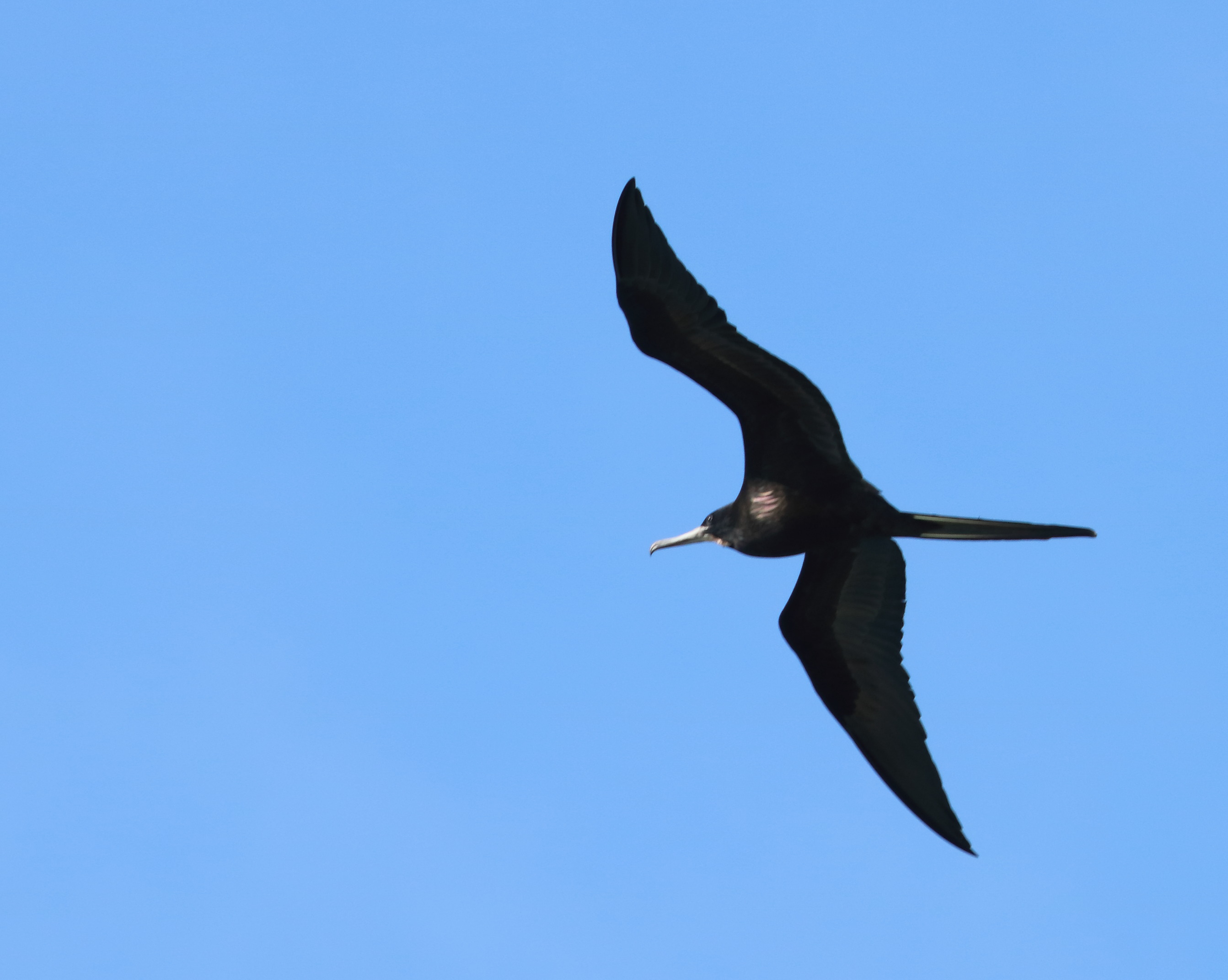
“Wait!” I yelled as we headed north from Key West. “Hawk!”
Nick and I peered through the windshield. Above us, at the very top of a flock of vultures, soared a small, dark-winged buteo with a striped tail and pointed wings.
“Is it Short-tailed?” I asked, trying to think what else it could be.
“There aren’t Red-taileds here,” said Nick, “And dark morph Broad-winged are incredibly rare in the east, if not unreported. That’s a Short-tailed!”
“Woohoo!” I yelled, rolling down the window to get better looks as our car zoomed a hundred meters underneath my last, and best lifer of the day. Okay, so maybe the Keys hadn’t been that bad! We’d missed Mangrove Cuckoo, of course, but Nick and I had a plan for that. A place by the name of Ding Darling National Wildlife Refuge . . .

